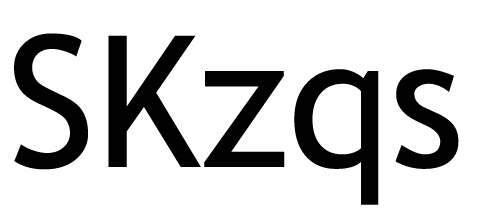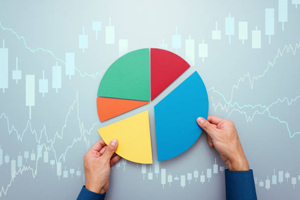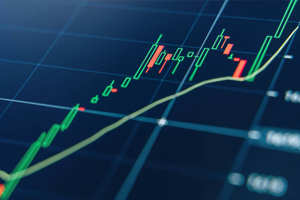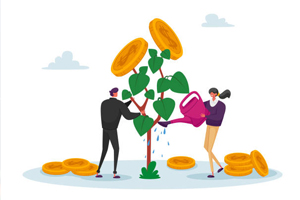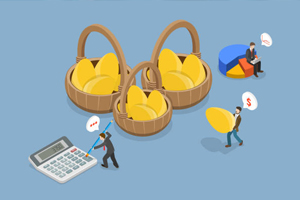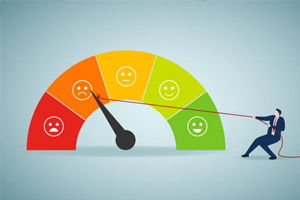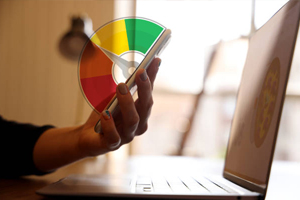Understanding the difference between secured and unsecured loans
Unlock the secrets of secured and unsecured loans Learn the differences, advantages, and credit score impacts to make informed financial decisions Explore our comprehensive guide now!
Welcome to our comprehensive guide on secured and unsecured loans, where we delve into the nuances of these financial instruments. Understanding the key differences between secured loans, which involve collateral, and unsecured loans, which do not, is crucial for making informed financial decisions. In this guide, we explore the characteristics, pros and cons, and the impact on credit scores associated with each loan type. Whether you're planning a major purchase, debt consolidation, or addressing short-term financial needs, this guide aims to provide you with the knowledge to navigate the lending landscape effectively. Let's embark on this journey to unravel the intricacies of secured and unsecured loans and empower you to make sound financial choices.
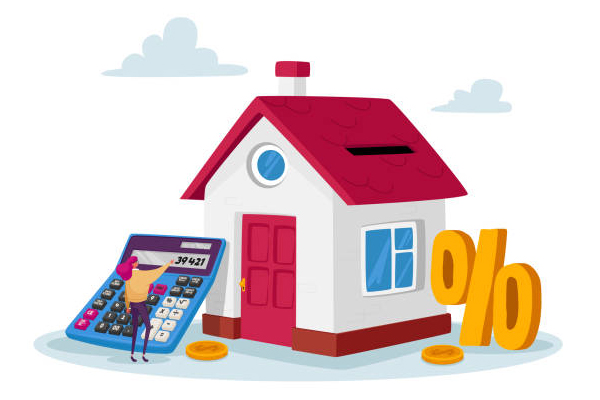
Secured vs. Unsecured Loans: A Comprehensive Guide
Understanding Secured Loans
Secured loans are backed by collateral, such as real estate or a vehicle. This collateral serves as security for the lender, reducing risk.
Definition and Characteristics
Explore the fundamental features of secured loans, including the necessity of collateral and the borrower's commitment to repay.
Common Examples
Examine prevalent secured loans like mortgages and auto loans, understanding how the collateral ties into these financial arrangements.
Pros and Cons
Weigh the advantages, such as potentially lower interest rates, against the disadvantages, including the risk of asset repossession.
Understanding Unsecured Loans
Unsecured loans don't require collateral, relying on the borrower's creditworthiness. These include personal loans and credit cards.
Definition and Characteristics
Delve into the characteristics of unsecured loans, where approval is based on credit history and financial stability without the need for collateral.
Common Examples
Explore popular unsecured loans like personal loans and credit cards, understanding the flexibility they offer to borrowers.
Pros and Cons
Assess the benefits, such as no risk of asset loss, and the drawbacks, like higher interest rates and potentially stricter eligibility criteria.
Collateral and Risk Assessment
Understand the critical role collateral plays in secured loans and how lenders evaluate risk in unsecured lending scenarios.
Role of Collateral in Secured Loans
Learn how the presence of collateral provides security to lenders, influencing interest rates and loan terms.
Impact on Interest Rates
Explore how the risk associated with unsecured loans can result in higher interest rates compared to secured counterparts.
Risk Evaluation in Unsecured Loans
Examine the methods lenders use to assess risk in unsecured loans, emphasizing the importance of creditworthiness.
Understanding Secured Loans
Definition and Characteristics
Secured loans are financial arrangements where the borrower pledges collateral to secure the loan. The collateral serves as a guarantee for the lender, mitigating risk. Characteristics include:
- Collateral Requirement: A tangible asset, such as real estate or a vehicle, is needed to secure the loan.
- Risk Reduction: Collateral reduces the risk for the lender, resulting in potentially lower interest rates.
- Asset Tie-In: The value of the collateral is directly linked to the loan amount and terms.
Common Examples (e.g., Mortgage, Auto Loans)
Secured loans encompass various financial products, each tailored to specific needs. Common examples include:
- Mortgage: A loan secured by real estate, typically used for home purchases.
- Auto Loans: Loans secured by the financed vehicle, providing funding for car purchases.
- Secured Credit Cards: While not a traditional loan, these cards require a security deposit, serving as collateral.
Pros and Cons
Understanding the advantages and disadvantages of secured loans is crucial for informed financial decisions.
Pros:
- Lower Interest Rates: Collateral reduces risk, often resulting in more favorable interest rates.
- Higher Approval Odds: Easier approval for individuals with lower credit scores or limited credit history.
- Larger Loan Amounts: Collateral allows for the borrowing of substantial amounts.
Cons:
- Asset Risk: The risk of losing the pledged asset if unable to repay the loan.
- Stricter Eligibility: Lenders may have specific criteria for the type and condition of collateral.
- Longer Approval Process: Secured loans often involve a more extensive approval and documentation process.
Understanding Unsecured Loans
Definition and Characteristics
Unsecured loans are financial instruments that do not require collateral, relying on the borrower's creditworthiness. Here are key characteristics:
- No Collateral Requirement: Unsecured loans do not necessitate assets as security.
- Credit-Based Approval: Lenders evaluate the borrower's credit history and financial stability.
- Flexible Use of Funds: Borrowers have more flexibility in using funds as there is no tied collateral.
Common Examples (e.g., Personal Loans, Credit Cards)
Unsecured loans offer versatility for various financial needs. Examples include:
- Personal Loans: Versatile loans used for a range of purposes, such as debt consolidation or home improvements.
- Credit Cards: Revolving credit lines allowing for purchases and payments without collateral.
- Student Loans: Funding for education without requiring assets as security.
Pros and Cons
Evaluating the advantages and disadvantages of unsecured loans is crucial for informed financial decisions.
Pros:
- No Asset Risk: Borrowers do not risk losing assets if unable to repay.
- Quicker Approval: Unsecured loans often have a faster approval process.
- Wide Accessibility: Available to a broader range of borrowers, including those without valuable assets.
Cons:
- Higher Interest Rates: Interest rates may be higher due to the increased risk for lenders.
- Lower Loan Amounts: The absence of collateral may limit the amount that can be borrowed.
- Stricter Eligibility Criteria: Lenders may require a strong credit history for approval.
Collateral and Risk Assessment
Role of Collateral in Secured Loans
The presence of collateral in secured loans plays a crucial role in shaping the dynamics of these financial instruments:
- Risk Mitigation: Collateral serves as a form of security for the lender, reducing the risk associated with the loan.
- Lower Interest Rates: The use of collateral often leads to lower interest rates for secured loans.
- Asset Value Assessment: Lenders assess the value of the collateral to determine the loan amount and terms.
- Asset Type Variation: Different types of assets, such as real estate or vehicles, may impact loan terms differently.
Impact on Interest Rates
The presence or absence of collateral significantly influences the interest rates associated with secured and unsecured loans:
- Secured Loan Rates: Collateral provides security, resulting in generally lower interest rates compared to unsecured loans.
- Unsecured Loan Rates: Without collateral, lenders may charge higher interest rates to compensate for increased risk.
- Credit Score Impact: Borrower credit scores also play a role in determining interest rates for both types of loans.
Risk Evaluation in Unsecured Loans
Assessing risk is a critical aspect of unsecured loans, given the absence of collateral. Lenders employ various methods to evaluate risk:
- Credit History Scrutiny: Lenders closely examine the borrower's credit history and credit scores to gauge creditworthiness.
- Income Verification: Verification of stable income helps lenders assess the borrower's ability to repay without collateral.
- Debt-to-Income Ratio: Evaluating the borrower's existing debt relative to their income provides insights into financial stability.
- Interest Rate Adjustment: Higher perceived risk may result in higher interest rates for unsecured loans.
Application and Approval Process
Secured Loan Application Steps
Applying for a secured loan involves a series of steps to ensure a smooth and successful process:
- Asset Assessment: Identify and assess the value of the collateral you intend to use.
- Choose the Right Lender: Select a lender experienced in the type of secured loan you are seeking.
- Loan Amount Determination: Understand how the value of your collateral impacts the loan amount.
- Complete Application: Fill out the application, providing accurate details about your financial situation.
- Credit Check: While not as heavily weighted as in unsecured loans, expect a credit check as part of the process.
- Collateral Verification: The lender may assess and verify the condition and value of the collateral.
- Approval and Terms: Once approved, review and understand the loan terms before finalizing the agreement.
Unsecured Loan Application Steps
Securing an unsecured loan involves a different set of steps, primarily focused on your creditworthiness:
- Credit Check: Expect a thorough credit check as lenders heavily rely on your credit history.
- Income Verification: Provide evidence of a stable income to demonstrate your ability to repay the loan.
- Choose the Right Lender: Look for lenders specializing in unsecured loans with favorable terms.
- Complete Application: Fill out the application form, ensuring accuracy in your financial details.
- Approval Decision: Lenders assess your creditworthiness and financial stability to make an approval decision.
- Review Loan Terms: Carefully review the offered terms and conditions before accepting the loan.
- Finalize Agreement: Complete any remaining documentation and finalize the loan agreement.
Factors Influencing Approval
Several factors play a role in determining whether a secured or unsecured loan application gets approved:
- Credit Score: A higher credit score generally improves the chances of approval for unsecured loans.
- Collateral Value: The value and type of collateral impact approval for secured loans.
- Income Stability: Lenders assess your income stability to ensure you can meet repayment obligations.
- Debt-to-Income Ratio: A lower ratio indicates a healthier financial position and may enhance approval chances.
- Loan Amount: The amount you apply for also influences approval decisions for both secured and unsecured loans.
Interest Rates and Terms
Interest Rate Structures for Secured Loans
The interest rate structures for secured loans are influenced by various factors, contributing to a nuanced approach:
- Collateral Impact: The type and value of collateral directly impact the interest rate.
- Loan-to-Value Ratio: Lenders may use the loan-to-value ratio to determine the interest rate.
- Credit Score Influence: While not as critical as in unsecured loans, a higher credit score may lead to a lower interest rate.
- Lender Policies: Different lenders may have varying policies on how they structure interest rates for secured loans.
- Market Conditions: Economic conditions and market trends can influence interest rate structures.
Interest Rate Structures for Unsecured Loans
Unsecured loans, not backed by collateral, have distinct factors influencing their interest rate structures:
- Credit Score Dominance: The primary factor is the borrower's credit score, significantly impacting the interest rate.
- Income Consideration: Lenders may assess income stability as it relates to the interest rate determination.
- Loan Amount Impact: The requested loan amount can influence the interest rate for unsecured loans.
- Market Trends: Economic conditions and lending market trends play a role in setting interest rates.
- Lender Policies: Each lender may have unique policies and criteria for determining interest rates.
Loan Terms and Repayment Periods
The terms and repayment periods for both secured and unsecured loans contribute to the overall borrowing experience:
- Secured Loan Terms: Longer repayment periods are common for secured loans, allowing for lower monthly payments.
- Flexibility in Repayment: Secured loans may offer more flexibility in structuring repayment schedules.
- Unsecured Loan Terms: Typically, unsecured loans have shorter repayment periods with fixed monthly payments.
- Interest Rate and Term Correlation: Longer terms may come with higher interest rates for both secured and unsecured loans.
- Borrower Preferences: Borrowers often choose loan terms based on their financial goals and preferences.
Impact on Credit Score
Secured Loans and Credit Scores
The relationship between secured loans and credit scores involves various factors that borrowers should be aware of:
- Positive Impact: Successfully managing and repaying secured loans can have a positive impact on credit scores.
- Collateral Significance: The type and value of collateral influence the extent of the credit score impact.
- Credit Mix Advantage: Including a secured loan in your credit mix can be beneficial for credit score calculations.
- Default Consequences: Failing to repay a secured loan may lead to negative marks on your credit report.
- Repossession Impact: If collateral is repossessed due to non-payment, it can harm your credit score.
Unsecured Loans and Credit Scores
Understanding the dynamics between unsecured loans and credit scores is crucial for responsible financial management:
- Primary Credit Score Factor: Unsecured loans heavily rely on credit scores for approval and interest rate determination.
- Impact of Timely Payments: Consistently making on-time payments on unsecured loans positively affects credit scores.
- Default Ramifications: Defaulting on an unsecured loan can lead to severe negative consequences on credit scores.
- Debt-to-Income Ratio Impact: Unsecured loans influence your debt-to-income ratio, which is considered in credit scoring models.
- Hard Inquiries: The application process for unsecured loans may result in hard inquiries, affecting credit scores temporarily.
Building Credit History
Both secured and unsecured loans play roles in building a robust credit history, a vital aspect of overall creditworthiness:
- Secured Loans: Offer an opportunity to establish credit history through responsible use and repayment.
- Unsecured Loans: Showcase credit management skills and contribute to a diverse credit history.
- Timely Payments: Consistently making timely payments on any loan is a key factor in positive credit history.
- Credit Mix Consideration: Lenders and credit scoring models value a mix of secured and unsecured credit.
- Long-Term Impact: Building a positive credit history opens doors to favorable terms on future loans and financial opportunities.
Choosing the Right Loan for Your Needs
Factors to Consider
When selecting a loan, various factors should be carefully considered to align with your financial situation and goals:
- Interest Rates: Compare the interest rates of different loan types to understand the long-term financial implications.
- Repayment Terms: Evaluate the repayment periods offered by lenders and choose a timeline that suits your budget.
- Collateral Availability: Assess whether you have assets for secured loans or prefer the flexibility of unsecured options.
- Credit Score: Understand the credit score requirements for different loan types and your own creditworthiness.
- Loan Amount: Determine the amount you need and ensure it aligns with the loan types you're considering.
Personal Finance Assessment
A thorough personal finance assessment is essential to ensure that the chosen loan aligns with your overall financial health:
- Budget Analysis: Evaluate your monthly budget to determine the affordability of loan payments.
- Debt-to-Income Ratio: Consider your existing debts and how a new loan would impact your debt-to-income ratio.
- Emergency Fund: Assess the availability of an emergency fund to cover unexpected expenses and loan payments.
- Long-Term Financial Goals: Align the chosen loan with your broader financial objectives, such as homeownership or debt consolidation.
- Risk Tolerance: Consider your comfort level with risk, especially if opting for variable interest rates or unsecured loans.
Matching Loan Types to Financial Goals
Understanding how different loan types align with specific financial goals helps in making informed decisions:
- Homeownership: Mortgage loans are tailored for purchasing homes, offering long-term stability with secured collateral.
- Debt Consolidation: Unsecured personal loans or secured loans using existing assets can help consolidate high-interest debts.
- Short-Term Needs: For short-term financial needs, unsecured loans or credit cards may provide flexibility without collateral requirements.
- Vehicle Purchase: Auto loans, often secured, are designed for financing the purchase of vehicles with specific terms.
- Business Ventures: Small business loans or lines of credit can support entrepreneurial endeavors with structured repayment plans.
FAQs:Common Questions about Secured and Unsecured Loans
Q1. What is the main difference between secured and unsecured loans?
A: The primary distinction lies in collateral. Secured loans require assets as security, while unsecured loans do not involve collateral. The presence of collateral affects factors such as interest rates and approval criteria.
Q2. How does the choice between secured and unsecured loans impact interest rates?
A: Secured loans often have lower interest rates due to the reduced risk for lenders backed by collateral. Unsecured loans, lacking collateral, may have higher interest rates to compensate for the increased risk borne by the lender.
Q3. Can the type of loan chosen influence credit scores?
A: Yes, it can. Both secured and unsecured loans can impact credit scores. Timely repayments positively affect credit scores, while defaults or late payments can have adverse effects. The type of loan and its terms play roles in credit score dynamics.
Q4. What happens if I default on a secured loan?
A: If you default on a secured loan, the lender may seize the collateral to recover losses. This can lead to the repossession of assets. It's crucial to communicate with the lender in case of financial difficulties to explore alternative arrangements.
Q5. How do I choose between a secured and unsecured loan for my specific financial goal?
A: Consider factors such as the amount needed, your credit score, the presence of collateral, and the purpose of the loan. For large purchases like a home or car, secured loans may be suitable. Unsecured loans, on the other hand, offer flexibility for various short-term financial needs.
